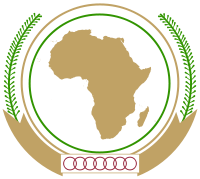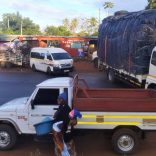Mozambique: 300 terrorists have surrendered to authorities in Mocímboa da Praia recently - report
African Union study says employment is the biggest challenge in Angola and Mozambique

in file CoM
Employment is the biggest challenge for Angola, Mozambique and the other eight southern African countries, according to a study by the African Union (AU) and Organisation for Economic Co-operation and Development (OECD) on growth policies on the continent.
The report “Dynamics of Development in Africa – Growth, Employment and Inequality 2018” estimates that 16.5 million people in Angola, South Africa, Botswana, Lesotho, Malawi, Mozambique, Namibia, Swaziland, Zambia and Zimbabwe will have no work during the period from 2015 to 2030.
The ten southern African countries to which the study refers have 177 million residents, representing 14 percent of the population on the African continent, according to AU statistics, which notes in the study that, by 2030, 1.1 million people could be entering the labour market each year.
The first AU-OECD report on the relationship between growth, employment and inequality in Africa and its implications for any strategic framework points to the problem of diversification of economies, stressing that “several countries depend heavily on the mining sector, which is volatile and creates few jobs”.
The limited creation of jobs, the incompatibility of skills and barriers to starting and growing new businesses are advanced as causes of long-term unemployment rates of 15-35 percent in the countries that make up the Southern African Development Community (SADC).
In the non-SADC countries – the Democratic Republic of Congo, Mauritius, Tanzania, Seychelles and Madagascar – most workers do not have the financial resources or qualification to enter the labour market.
“Most of the workers are underemployed and work in poverty, especially in agriculture and low value-added services,” note the report’s African academic researchers, economists and other expert authors.
Southern Africa nations with “high levels of income inequality” are equally unequal in employment opportunities for men and women.
“Gender inequality remains a significant obstacle,” the study says, stressing the existence of “generally higher unemployment rates for women than men, even among young people”.
It is concluded that “the difference between men and women in the labour force remains large” in Angola, South Africa, Botswana, Lesotho, Malawi, Mozambique, Namibia, Swaziland, Zambia and Zimbabwe.
Extreme poverty in the region reached 35.8 percent of the population in 2013, reflecting a fall from 43.8 percent since 1990.
The report says the decline was the result of “social spending and growth helping to reduce extreme poverty” in the region, where the majority of rural people still do not have access to basic services such as electricity, water and sanitation.
The authors of the study compare rural and urban realities and conclude that there is “a great opportunity gap” for people living outside urban centres.
In electricity, the “wide disparity of access” is proven by the numbers: in rural areas, only 22 percent of people have electricity, while in urban centres coverage is 80 percent. And 48 percent of the rural population has access to potable water, against 87 percent in urban centres.
Figures on health indicate that access to healthcare in rural areas is 34 percent, against 65 percent in urban centres.












Leave a Reply
Be the First to Comment!
You must be logged in to post a comment.
You must be logged in to post a comment.